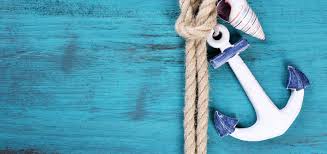In 1971, famed undersea explorer Jacques Cousteau helped turn Belize into a diver’s paradise when he tagged the Great Blue Hole sinkhole as one of world's top ten diving spots. You'll know it if you see it: a brilliant dark blue pupil 1,000 feet across surrounded by an iris of lighter blue-green, sitting in the middle of the Belize Barrier Reef 43 miles off of the country's tropical coast.
How did such a perfect circle end up beneath the crystal-clear water? Blame not one, but four collapses. The Great Blue Hole began its life above water during glacial periods as a dry cavern system full of rock columns and stalactites. It sat on what was once Lighthouse Reef Atoll, a limestone plateau.
Until it fell in, that is: According to Frank Gordon Kirkwood, an environmental chemist and Blue Hole expert, four separate geological events occurred between 10,000 and 150,000 years ago. Each time, the ocean level rose, flooding each cavern and causing it to collapse. At the end, he tells Smithsonian.com, “the roof of the huge round cavern collapsed and the sea level finally rose the rest of the 400 feet to its current level.” Now, it’s considered a vertical cave—and it even looks good from space.
That formation process gave the Great Blue Hole its unique color, says Kirkwood. The sinkhole is about 400 feet deep, surrounded by ten-foot-deep water on top of the now-underwater atoll. The deep water looks dark blue, circled by shallower light blue-green water with a sandy bottom spiked with coral. A stalactite gallery sits under 135 feet of water, above several deeper caverns.
Most divers head for the Hole because of its unique underwater landscape, but it's also home to a large and surprisingly robust group of aquatic life forms. The hole is a bit anomalous—the water is mostly shallow and open sea is at least a mile and a half away. Regardless, the sinkhole is filled with large shoals of yellow snapper and Bermuda chub, Caribbean reef sharks (“impressively sized,” according to Kirkwood), hammerhead sharks, spotted eagle rays, French angelfish, midnight parrotfish and hawksbill sea turtles.
Though the Great Blue Hole is a must-see destination for many scuba divers, those without a highly technical level of training might leave disappointed. There’s usually only enough oxygen to stay down for about eight minutes exploring the stalactite gallery before starting the ascent back up—a challenge for any but the most experienced divers.
But those on the lookout for other sinkholes are in luck: Belize, and indeed much of Central America, is packed with cenotes, as they are known. Though the Great Blue Hole is the only submarine sinkhole in Belize, other sinkholes without an underground cave system exist in the country, like the Blue Hole near Belmopan and another collapsed sinkhole in the Chiquibul National Park in mainland Belize. Others, like Cara Blanca, were sacred Maya sites.
Belize may hold other sinkholes, but something else sets the Great Blue Hole apart: This one might hold the key to the ruin of Maya civilization in the area. In 2014, researchers took samples of sediment from both the Great Blue Hole and a lagoon in central Belize. The samples dated back to the decline of the area's Maya population in around 800 to 1000 A.D. Answers lie in what the researchers didn’t find. A relatively low occurrence of titanium—presence of the mineral is indicative of heavy rainfalls—suggests that during these years, droughts were longer and worse, destroying water supplies and killing crops. If the Maya didn’t die from starvation or disease, they must have been forced to bail on their cities for some other reason.
Does the hole hold other clues to an ancient civilization's downfall? Perhaps. But the world’s largest natural formation of its kind would intrigue adventurers even without the connection to Maya culture. Beheld from above or explored from within, something about that mysterious round formation beckons to explorers, divers and marine life alike.

No comments:
Post a Comment
Name
Last Name
Address